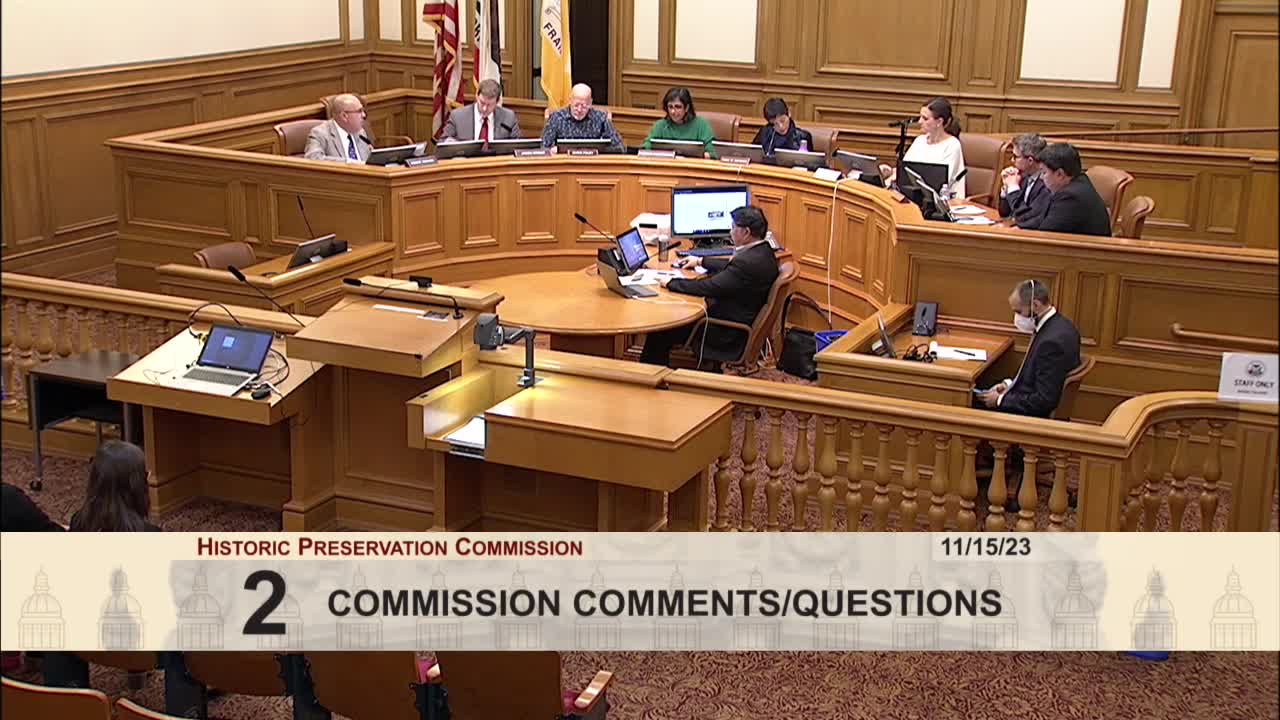Port of San Francisco discusses sea level rise strategies with preservation committee
November 15, 2023 | San Francisco City, San Francisco County, California
This article was created by AI summarizing key points discussed. AI makes mistakes, so for full details and context, please refer to the video of the full meeting. Please report any errors so we can fix them. Report an error »

In a recent meeting focused on the City of San Francisco's efforts to address sea level rise, discussions highlighted the ongoing collaboration between the Port of San Francisco and the Army Corps of Engineers. This partnership aims to develop strategies for protecting the city's pier structures, particularly along the Embarcadero, which are increasingly threatened by rising waters.
The meeting, attended by members of the Historic Preservation Technical Advisory Committee, emphasized the long-term nature of this project. Key figures, including President Matsuda, have been actively involved in multiple discussions surrounding the preservation and adaptation of these historic structures. The committee is exploring various engineering solutions, such as raising existing buildings, constructing new bulkheads, or even implementing floating structures to mitigate the impacts of sea level rise.
A significant aspect of the discussions was the upcoming feasibility study, set to be published in late January. This study will outline potential approaches to managing the challenges posed by rising sea levels and will invite public comment, ensuring community engagement in the decision-making process. The planning department is also expected to facilitate a presentation at the Historic Preservation Commission to further inform stakeholders about the findings.
Currently, the committee is assessing the resources along the Embarcadero, identifying 19 structures that may require attention out of a total of 29. This analysis is crucial for understanding the extent of the preservation efforts needed and the potential impact on the historic character of the area.
As the city grapples with the realities of climate change, the discussions at this meeting underscore the importance of proactive planning and community involvement in safeguarding San Francisco's coastal heritage for future generations. The outcomes of the feasibility study and subsequent public engagement will be pivotal in shaping the city's response to these pressing environmental challenges.
The meeting, attended by members of the Historic Preservation Technical Advisory Committee, emphasized the long-term nature of this project. Key figures, including President Matsuda, have been actively involved in multiple discussions surrounding the preservation and adaptation of these historic structures. The committee is exploring various engineering solutions, such as raising existing buildings, constructing new bulkheads, or even implementing floating structures to mitigate the impacts of sea level rise.
A significant aspect of the discussions was the upcoming feasibility study, set to be published in late January. This study will outline potential approaches to managing the challenges posed by rising sea levels and will invite public comment, ensuring community engagement in the decision-making process. The planning department is also expected to facilitate a presentation at the Historic Preservation Commission to further inform stakeholders about the findings.
Currently, the committee is assessing the resources along the Embarcadero, identifying 19 structures that may require attention out of a total of 29. This analysis is crucial for understanding the extent of the preservation efforts needed and the potential impact on the historic character of the area.
As the city grapples with the realities of climate change, the discussions at this meeting underscore the importance of proactive planning and community involvement in safeguarding San Francisco's coastal heritage for future generations. The outcomes of the feasibility study and subsequent public engagement will be pivotal in shaping the city's response to these pressing environmental challenges.
Don't Miss a Word: See the Full Meeting!
Go beyond summaries. Unlock every video, transcript, and key insight with a Founder Membership.
✓
Get instant access to full meeting videos
✓
Search and clip any phrase from complete transcripts
✓
Receive AI-powered summaries & custom alerts
✓
Enjoy lifetime, unrestricted access to government data
30-day money-back guarantee

